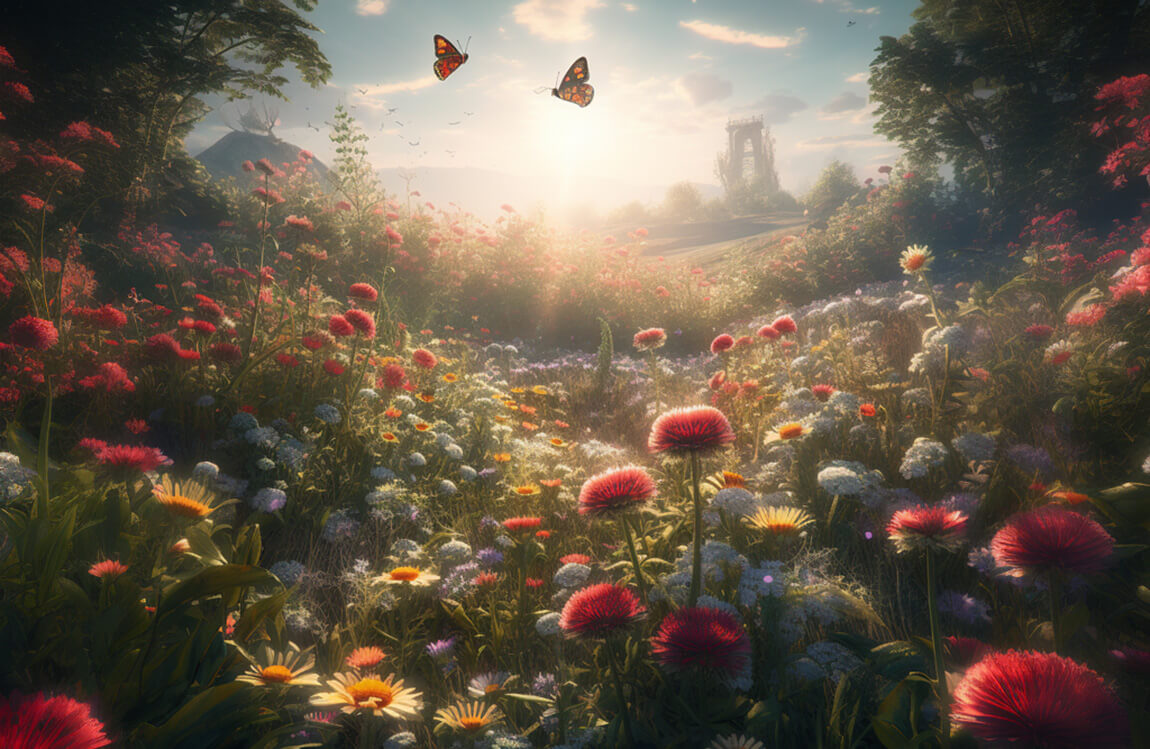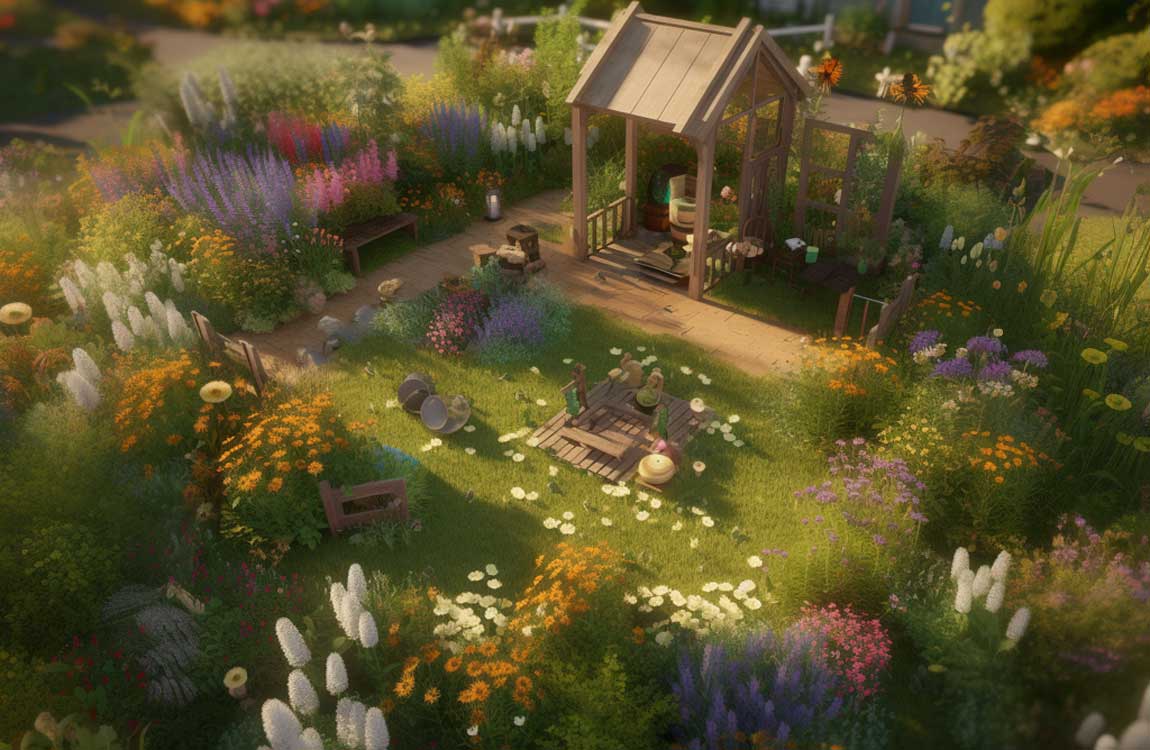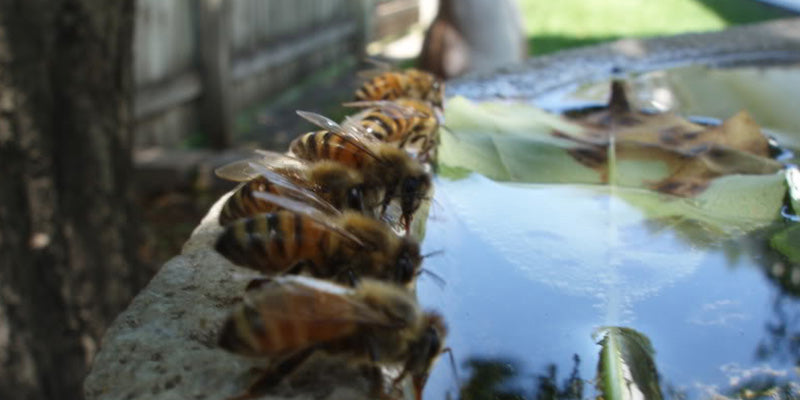Your Cart is Empty

Have you ever marveled at the diverse array of birds, butterflies, and bees that visit your garden? If you're a true nature lover, you understand the importance of creating a welcoming habitat for wildlife. One of the most effective ways to attract and support a thriving ecosystem in your backyard is by planting wildflowers. Not only do these beautiful plants enhance the aesthetic appeal of your garden, but they also play a crucial role in sustaining pollinators and other wildlife. In this article, we will explore the significance of pollinators in our ecosystem and how Seedles can help you attract butterflies, hummingbirds, and bees to your garden. We will also discuss the various ways wildflowers contribute to supporting wildlife and provide valuable tips on creating a wildlife-friendly garden. So, get ready to unleash your inner naturalist and discover the art of attracting wildlife with wildflowers!

Before we dive into the world of wildflowers, let's take a moment to understand why pollinators are so vital in our ecosystem. Pollinators, such as bees, butterflies, and hummingbirds, play a crucial role in the reproduction of flowering plants. When these busy creatures visit flowers in search of nectar, they inadvertently pick up and transfer pollen from the male parts of a flower to the female parts of another. This cross-pollination process allows plants to produce seeds, fruits, and vegetables.
But did you know that pollinators are responsible for much more than just our favorite foods? They are the unsung heroes that ensure the survival of countless plant species. Without pollinators, many plants would struggle to reproduce and eventually face extinction. In fact, it is estimated that approximately 80% of all flowering plants rely on animal pollinators for their survival.
Take a moment to imagine a world without the vibrant colors and sweet fragrances of flowers. It would be a dull and lifeless place. Pollinators not only help plants reproduce, but they also contribute to the beauty and diversity of our natural landscapes. Their presence enhances the aesthetic appeal of our surroundings, making our environment more enjoyable and visually stunning.
Furthermore, pollinators are essential for maintaining biodiversity and supporting wildlife populations. Many animals, including birds, bats, and small mammals, rely on the fruits and seeds produced by flowering plants for their survival. Without these food sources, these animals would struggle to find nourishment and their populations would decline.
But it doesn't stop there. Pollinators also play a crucial role in the functioning of entire ecosystems. By facilitating the reproduction of plants, they contribute to the overall health and resilience of our environment. Healthy ecosystems are better equipped to withstand environmental changes and disturbances, such as climate change and habitat loss.
So, how can we ensure the well-being of these important creatures? One way is to create pollinator-friendly habitats. By planting native wildflowers and providing nesting sites, we can attract and support a diverse range of pollinators. Additionally, reducing the use of pesticides and promoting sustainable farming practices can help protect pollinators from harmful chemicals.
In conclusion, pollinators are not just tiny insects or delicate birds. They are the unsung heroes that sustain the web of life on our planet. Without them, our food systems, landscapes, and ecosystems would be severely impacted. It is our responsibility to appreciate and protect these invaluable creatures for the benefit of present and future generations.
Now that we understand the significance of pollinators, let's explore how Seedles can help you attract these beautiful creatures to your garden. Seedles offers a wide variety of wildflower seed bombs that are specifically crafted to entice butterflies, hummingbirds, and bees.
Butterflies, with their delicate wings and vibrant colors, are a delight to behold. They play a crucial role in pollination, transferring pollen from one flower to another as they flit from blossom to blossom. By planting Seedles' wildflower seed bombs, you can create a haven for these graceful creatures. The carefully selected mix of wildflower seeds in the seed bombs will provide the nectar-rich blooms that butterflies seek. Imagine your garden filled with fluttering wings as these ethereal insects dance among the flowers.
Hummingbirds, with their iridescent feathers and rapid wing beats, are nature's tiny acrobats. These remarkable birds are attracted to bright, tubular flowers that offer a rich source of nectar. By incorporating Seedles' wildflower seed bombs into your garden, you can create a paradise for hummingbirds. The vibrant colors and nectar-rich blooms of the wildflowers will entice these aerial wonders, allowing you to witness their mesmerizing flight and hear the soft hum of their wings as they hover in mid-air.
Bees, with their industrious nature and gentle buzz, are essential pollinators for many plants. They diligently collect pollen and nectar, transferring them from flower to flower as they forage. By planting Seedles' wildflower seed bombs, you can provide a bountiful feast for bees. The carefully selected mix of wildflower seeds will offer a diverse array of nectar-rich blooms, ensuring a continuous supply of food for these important pollinators. Imagine the sight of bees buzzing around your garden, their busy activities contributing to the growth and reproduction of plants.
Simply scatter the seed bombs in your garden, water them, and watch as an enchanting display of wildlife-friendly flowers emerges. As the wildflowers bloom, they will not only attract butterflies, hummingbirds, and bees, but also other beneficial insects such as ladybugs and lacewings. These insects play a vital role in natural pest control, helping to keep your garden healthy and balanced.
By choosing Seedles' wildflower seed bombs, you are not only creating a beautiful garden but also actively contributing to the conservation of pollinators. As habitats for these creatures continue to diminish, providing them with a safe haven in your own backyard becomes increasingly important. So, let your garden become a sanctuary for butterflies, hummingbirds, and bees, a place where they can thrive and bring joy to your life.

Wildflowers are not just pretty faces; they are powerhouses of ecological value. Apart from providing a feast for the eyes, wildflowers serve as vital sources of food and shelter for countless species of wildlife. The nectar produced by wildflower blooms acts as a nutritious fuel for pollinators, sustaining them on their important journeys from flower to flower.
Imagine a sunny summer day, with a gentle breeze rustling through a meadow filled with wildflowers. Bees, butterflies, and other pollinators flit from one colorful bloom to another, collecting nectar to fuel their busy lives. The intricate relationship between wildflowers and pollinators is a delicate dance that has evolved over millions of years. As the pollinators visit the flowers in search of nectar, they inadvertently transfer pollen from one flower to another, enabling the plants to reproduce and create new generations of wildflowers.
But it's not just the pollinators that benefit from wildflowers. Many species of birds rely on the seeds and fruits produced by these plants as a vital food source. In the fall, when the wildflowers have gone to seed, the landscape becomes a veritable buffet for birds, small mammals, and insects. They feast on the nutritious seeds, helping to disperse them far and wide, ensuring the survival and diversity of wildflower populations.
Moreover, wildflowers provide essential shelter and habitat for a variety of wildlife. The dense foliage and intricate structure of wildflower meadows offer refuge and protection for small mammals, such as voles and mice, as well as insects like ladybugs and bees. These creatures find safety and shelter among the stems and leaves, creating a thriving microcosm of life within the wildflower ecosystem.
By planting wildflowers in your garden, you are essentially creating a buffet of sustenance for wildlife, ensuring a thriving ecosystem right at your doorstep. The vibrant colors and fragrant blooms will not only bring joy to your own life but also attract a diverse array of creatures, from bees and butterflies to birds and mammals. Your garden will become a haven for biodiversity, a place where nature can flourish and thrive.

Now that you're eager to start your own wildlife-friendly garden, let's explore some essential tips to make it a haven for biodiversity. First and foremost, choose a variety of native wildflowers that are suited to your region's climate and soil conditions. Native plants have coevolved with local wildlife and are more likely to attract the pollinators and animals native to your area.
When selecting native wildflowers, consider the different bloom times throughout the year. By choosing a variety of plants that bloom at different times, you can provide a continuous source of nectar and pollen for pollinators. This will ensure that your garden remains attractive to a diverse range of wildlife throughout the seasons.
In addition to native wildflowers, you can also incorporate other types of plants that provide food and shelter for wildlife. For example, planting fruit-bearing trees and shrubs can attract birds that rely on these fruits as a food source. Similarly, including plants with dense foliage or thorny branches can provide shelter and nesting sites for small mammals and birds.
Creating a water source is another crucial aspect of a wildlife-friendly garden. In addition to the shallow dish or container mentioned earlier, you can also consider adding a small pond or birdbath. These water features not only provide drinking water for wildlife but also serve as a habitat for aquatic insects, frogs, and other small creatures.
When designing your garden, think about incorporating different layers of vegetation. By including tall trees, shrubs, and groundcover plants, you can create a diverse habitat that accommodates a wide range of wildlife. The different layers provide nesting sites, hiding places, and foraging opportunities for various species.
It's important to note that maintaining a wildlife-friendly garden requires a different approach to pest control. Instead of relying on chemical pesticides and herbicides, embrace natural methods. For example, you can encourage beneficial insects like ladybugs and lacewings, which feed on garden pests, by planting flowers that attract them. Additionally, you can use physical barriers, such as netting or row covers, to protect vulnerable plants from pests.
Another effective pest control method is companion planting. By interplanting certain species, you can repel pests or attract beneficial insects. For instance, planting marigolds alongside your vegetable garden can help deter aphids, while planting dill or fennel can attract beneficial wasps that prey on caterpillars.
Lastly, consider leaving some areas of your garden undisturbed. These wilder sections can provide valuable habitat for wildlife, including beneficial insects, small mammals, and nesting birds. Fallen leaves, fallen branches, and decaying logs can all contribute to the natural cycle of your garden, providing food and shelter for a variety of organisms.
By following these tips and embracing a wildlife-friendly approach, your garden will not only be a beautiful and peaceful space for you to enjoy but also a thriving ecosystem that supports and attracts a diverse range of wildlife.

Creating a watering area for pollinators is an excellent way to ensure they have a reliable source of hydration in your garden. Not only does it provide them with the necessary water they need, but it also attracts a diverse range of pollinators, adding beauty and life to your outdoor space.
When it comes to making a watering area for pollinators, simplicity is key. Begin by selecting a shallow container or saucer that can hold water. You can repurpose an old dish or purchase a decorative one specifically designed for this purpose. The choice is yours, as long as it can hold water and is safe for the environment.
Once you have your container, fill it with clean water. It's important to use clean water to prevent any harmful substances from entering the ecosystem. Rainwater or tap water that has been left to sit for a day to allow chlorine to dissipate are good options. Avoid using water that has been treated with chemicals, as it can be detrimental to the health of the pollinators.
To make the watering area more inviting and functional for pollinators, consider adding some stones or floating objects inside the container. These will provide landing surfaces for butterflies and other insects, making it easier for them to access the water. The stones also serve as perches, allowing the pollinators to rest and groom themselves while they hydrate.
When positioning the watering area, choose a sunny spot in your garden. Most pollinators prefer warm and sunny locations, so placing the watering area in such an area will increase its attractiveness. Additionally, try to position it near your wildflower plantings or other areas where pollinators frequent. This will create a convenient and enticing oasis for them to visit.
Remember to regularly refill the water as needed. Depending on the weather and the number of pollinators visiting, the water level may decrease quickly. By keeping the water level consistent, you ensure that the pollinators always have access to a fresh and reliable water source.
Lastly, it's essential to clean the container regularly to prevent the growth of bacteria. Empty the water, scrub the container with a mild detergent, and rinse it thoroughly before refilling it. This simple maintenance routine will help keep the watering area clean and safe for the pollinators.
By creating a watering area for pollinators, you not only provide them with a vital resource but also contribute to the overall health and biodiversity of your garden. So, take a few moments to set up this simple yet impactful feature, and watch as the pollinators flock to your garden, bringing life and color to your outdoor space.
When selecting wildflower varieties for attracting wildlife, it's essential to choose species that are particularly appealing to pollinators and other animals. Here are some crowd-pleasing wildflowers to consider:
By including a mix of these wildflowers in your garden, you'll be well on your way to creating a buzzing and fluttering paradise.
If you're truly passionate about wildlife conservation, consider going beyond a few scattered wildflowers and creating a dedicated habitat for wildlife in your garden. Designate an area where you can grow wildflowers in larger patches or even meadows. This will provide a more extensive and sustainable food source for pollinators and other animals. By planting in clusters, you emulate the natural environment and increase the chances of wildlife discovering and utilizing your garden as a haven. Additionally, incorporating a diverse range of plant heights and structures will create niches for different species, attracting an even wider array of wildlife. So, unleash your creativity and let your garden become a thriving sanctuary for nature's gentle visitors.
Choosing the right wildflower species for your garden can seem like a daunting task, especially with the multitude of options available. However, fret not; we have some helpful tips to guide you. Start by assessing your garden's characteristics—soil type, sun exposure, and moisture levels. Next, research native wildflowers that thrive in similar growing conditions. Local plant nurseries, botanical gardens, and online resources can be valuable sources of information. Additionally, think about your goals for attracting wildlife. Are you primarily focused on supporting pollinators, or do you also want to create habitat for birds and small mammals? Tailor your selection accordingly. Finally, don't overlook the aesthetics. Choose wildflowers that resonate with your personal taste and will bring you joy every time you step outside. Remember, a successful wildflower garden is one that pleases both you and the wildlife it attracts.
Now that you possess the knowledge and inspiration to embark on your wildflower journey, it's time to start planning and planting. Create a space where nature can thrive, and let the wings of butterflies and the buzz of bees serenade you in your own wildlife paradise. Attracting wildlife with wildflowers is not just a dream; it's a tangible reality waiting to unfold in your garden!
Comments will be approved before showing up.